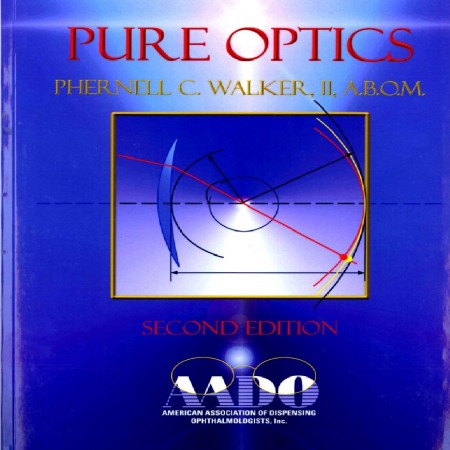Description
Advanced Opticians Tutorial (AOT) (prep for ABO Advanced Exam)
*** Updated 2019 ***
(Following is a random selection of text from the Advanced Opticians Tutorial)
…7 days if there is no further trauma. All cells are held together by a cement substance. The epithelium cells form a layer of uniform thickness and great regularity.
The second layer is Bowman’s layer, which is a basement membrane. It is a sheet of transparent tissue approximately 10 µm (.10mm) thick. It consists of randomly arranged collagen fibrils, attached to the limbus and is extremely tough. Any damage to Bowman’s layer will produce a fibrous scar tissue. Under electron microscopy it appears to be made up of uniform fibrils running parallel to the surface. Bowman’s layer is acellular; it is a modified superficial stromal layer. Bowman’s layer has previously been referred to as Bowman’s membrane and is commonly referred to as such today depending on the source of information. Bowman’s layer provides a barrier to most molecules.
The middle layer of the cornea is the Stroma or the Substantia Propria. It comprises approximately ninety percent of the total thickness of the cornea and consists of finely layered collagen fibrils 30 µm (.30mm) in diameter, stacked lamellae extending from limbus to limbus, running parallel to the surface and to each other. This regular structure in addition to the absence of blood vessels contributes to its transparency, and is dependent upon proper hydration. Collection of additional fluids in the stroma will interrupt the regular structure and produce edema and clouding of the stromal tissues. Six percent or greater edema of the stroma will greatly reduce transparency, creating posterior striae, and in greater swelling of ten percent or more posterior folds are produced. Nutrition is primarily through diffusion through the endothelium from the aqueous humor. Both proper fluid balance and nutrition can be influenced by contact lens wear, by changing the proper balance of both. Ulcers produced by bacterial, viral, or fungal infections or involving the deep layers of the stroma may take weeks to heal.
Lamellae are 2 µm thick (.02mm). Injury to the stroma produces a scar. Inflammatory cells will infiltrate from vessels at the limbus, and vessels often invade the stroma during chronic inflammation. The stroma requires oxygen to maintain deturgesced state and constant thickness. Hypoxia results in anaerobic metabolism lactate production, and imbibition of water: edema. When regular arrangement of collagen fibers is altered, the stroma loses transparency and becomes clouded. Turnover of collagen fibers is slow; from 2 – 3 years.
The fourth layer of the cornea is Descemet’s membrane which is a posterior limiting layer that is approximately 8-12 µm thick. It is comprised of two layers, the anterior banded layer, developed during embryology and a posterior layer which is non-banded and produced throughout life by the endothelium. Descemet’s membrane will retain the shape of the stroma when changes occur due to edema or other causes of corneal shape alteration causing striae. It is loosely attached by short fibrils from the stroma. It is a true basement membrane and resistant to penetration. Trauma, intraocular surgery, inflammation, or poorly fitting contact lenses may cause temporary folds to develop in Descemet’s membrane.
The most interior layer of the cornea is the Endothelium, which is comprised of a single layer of mostly hexagonally shaped cells about four to six micrometers thick and twenty micrometers wide, located at the posterior of the cornea. (See figure 12) It forms a barrier between the aqueous humor and corneal stroma. At birth, the human eye contains approximately 400,000 of these cells. No additional cells are developed throughout life, so preserving the healthy state of these…







